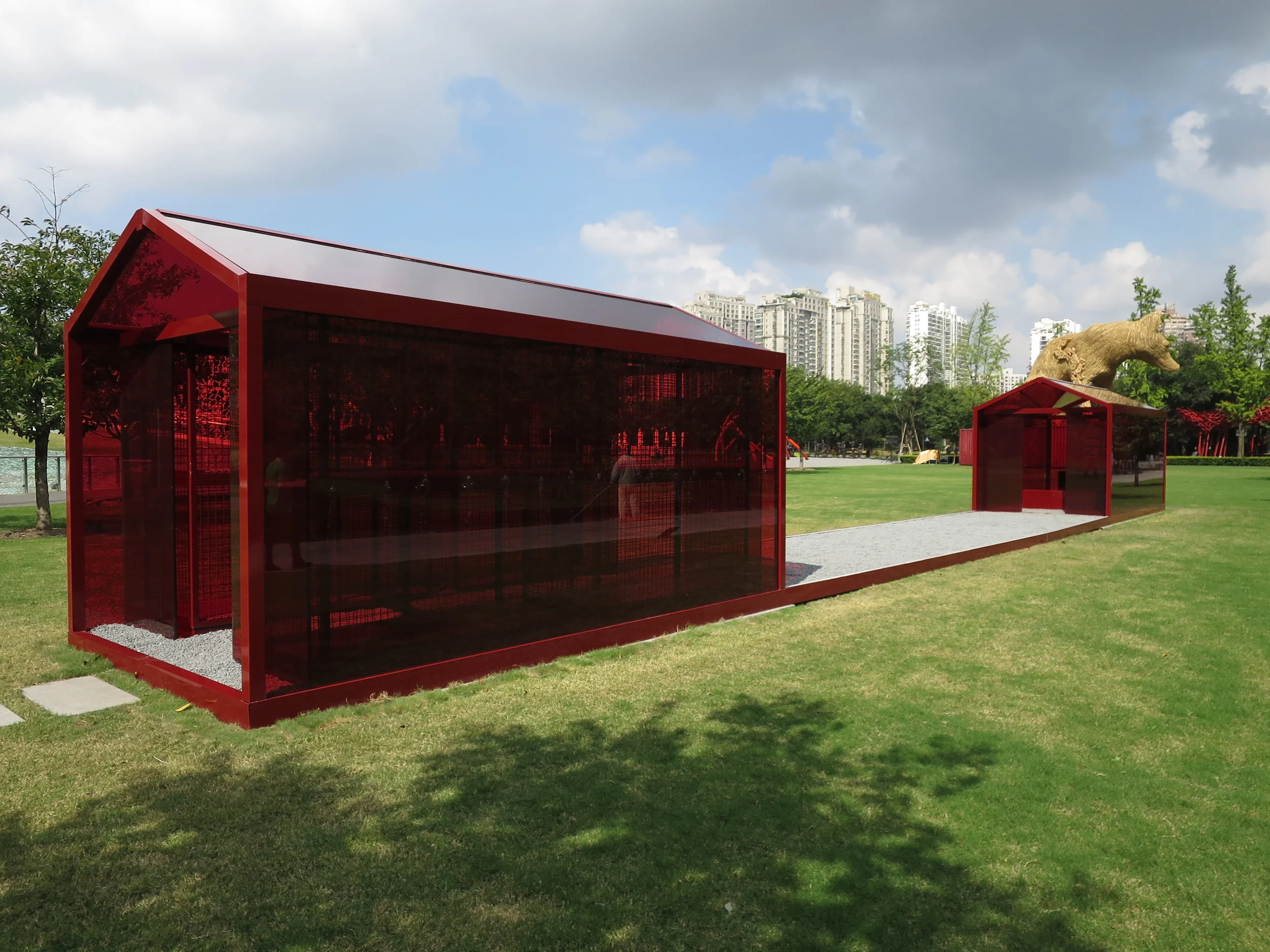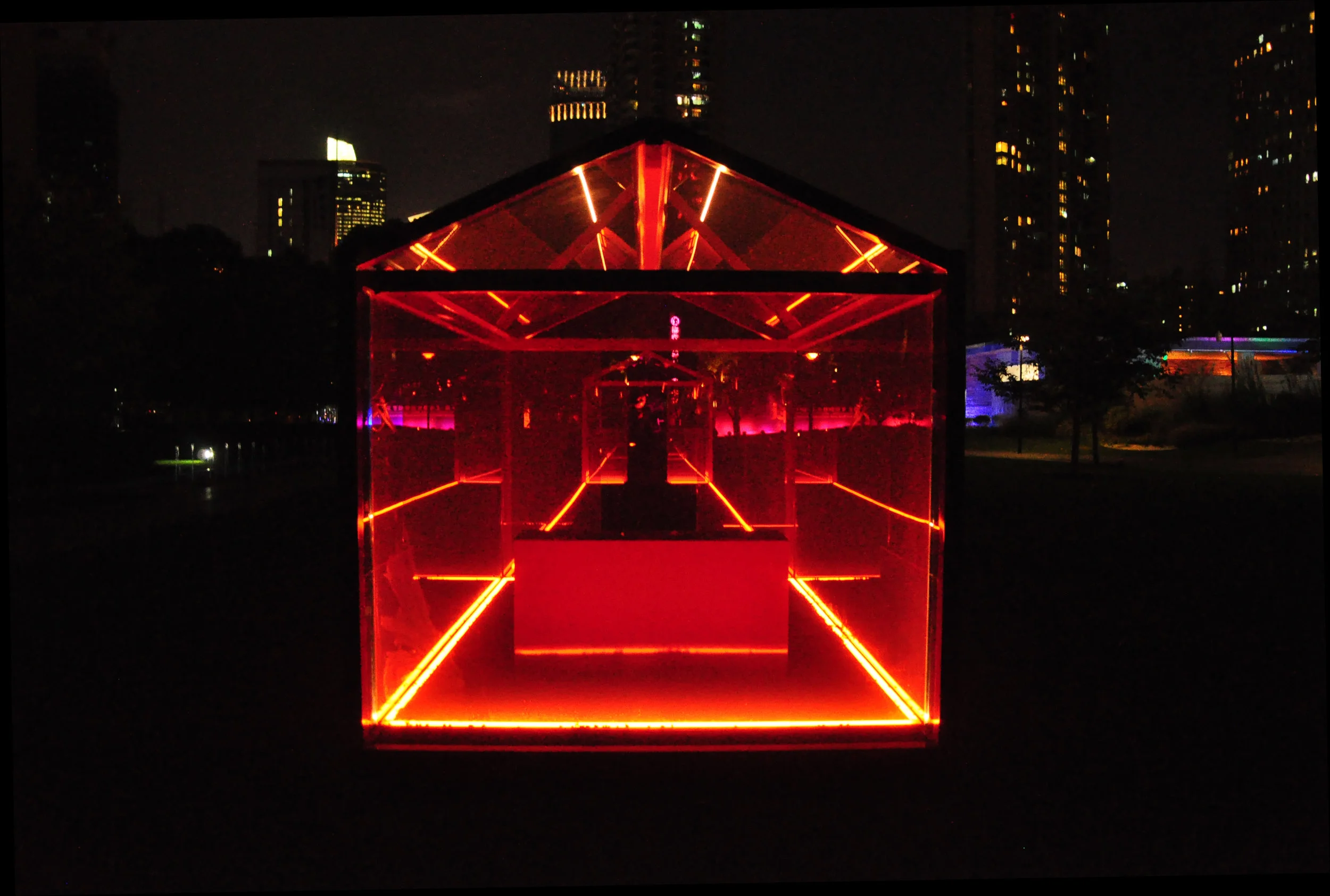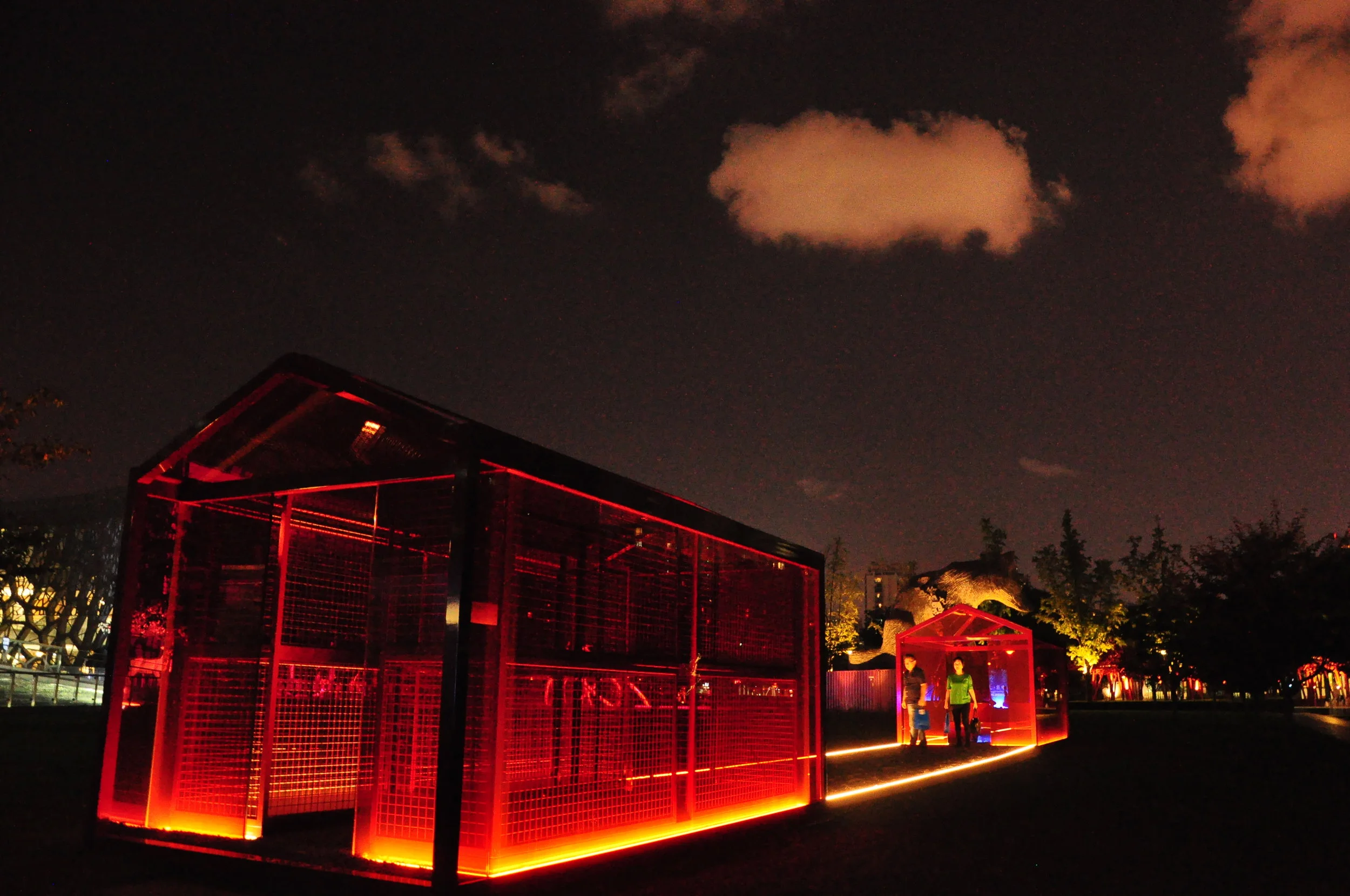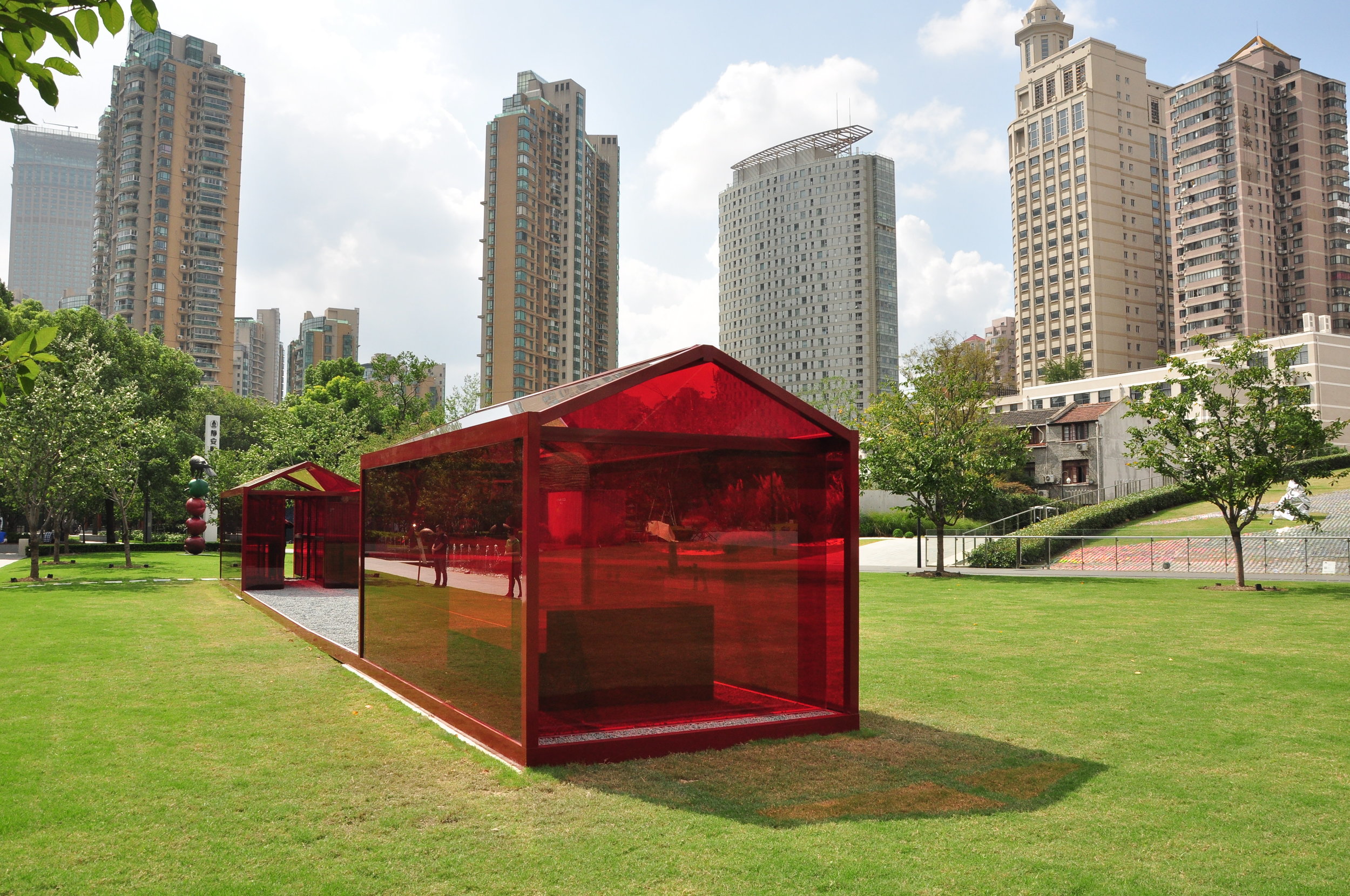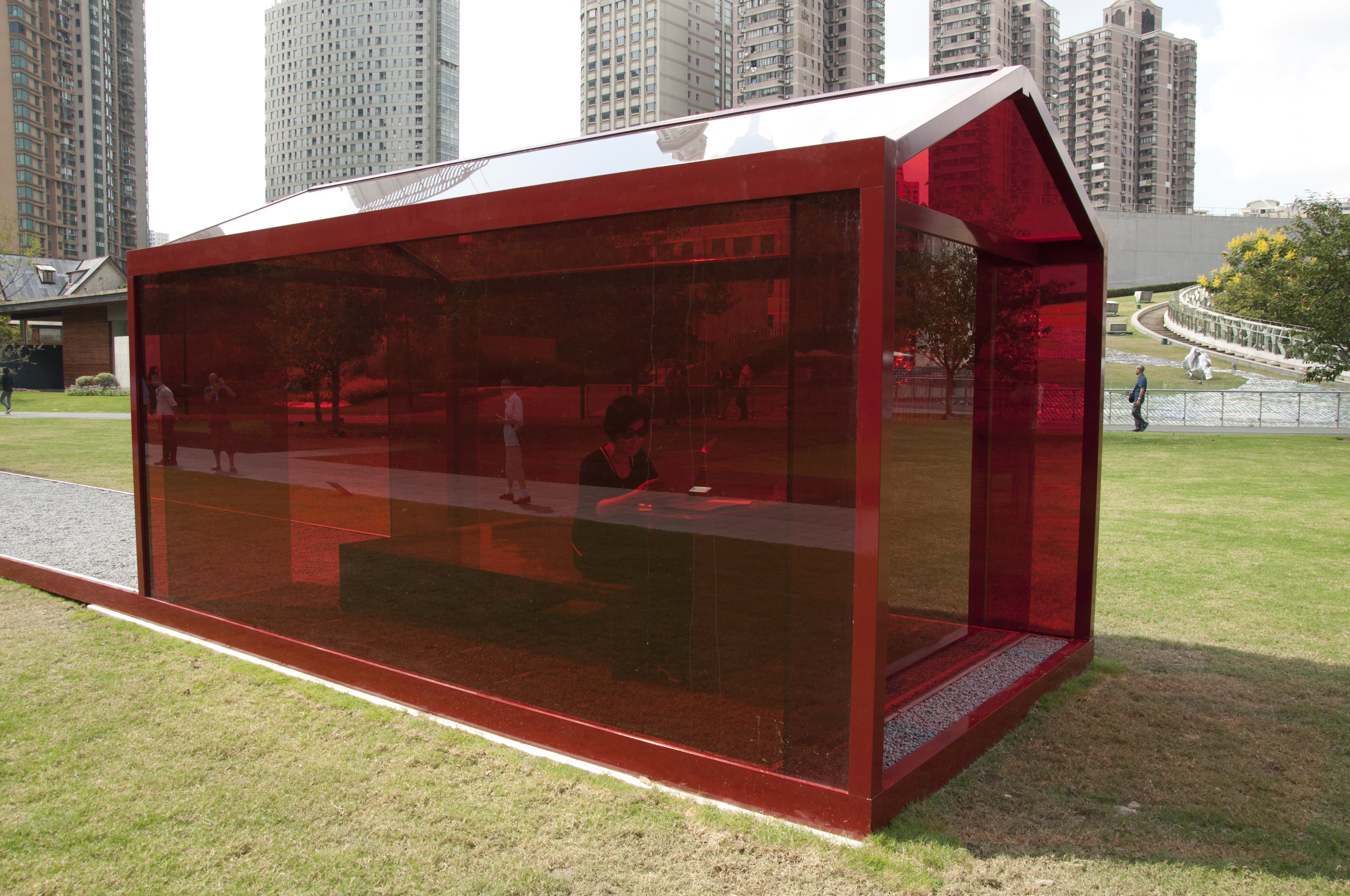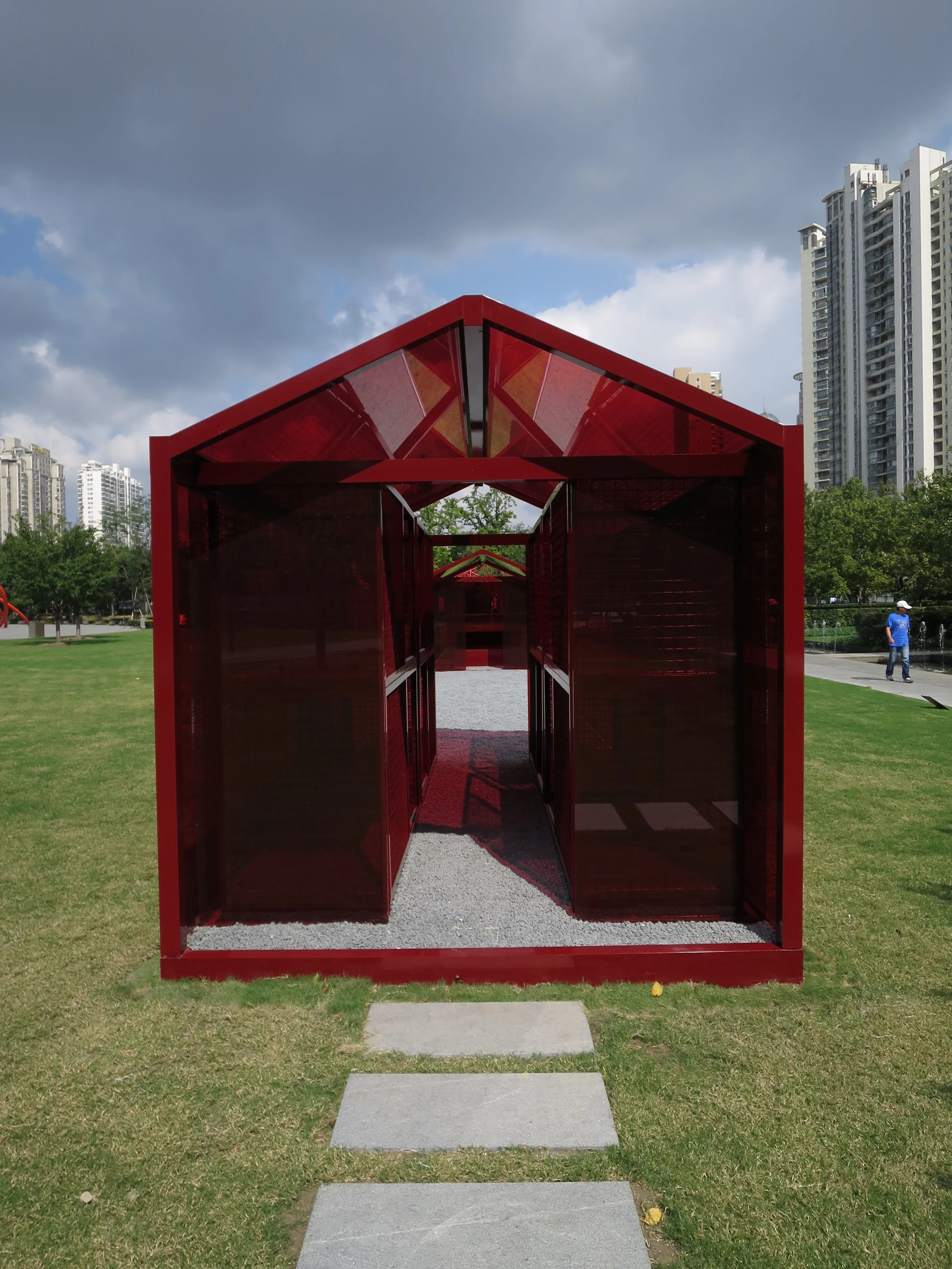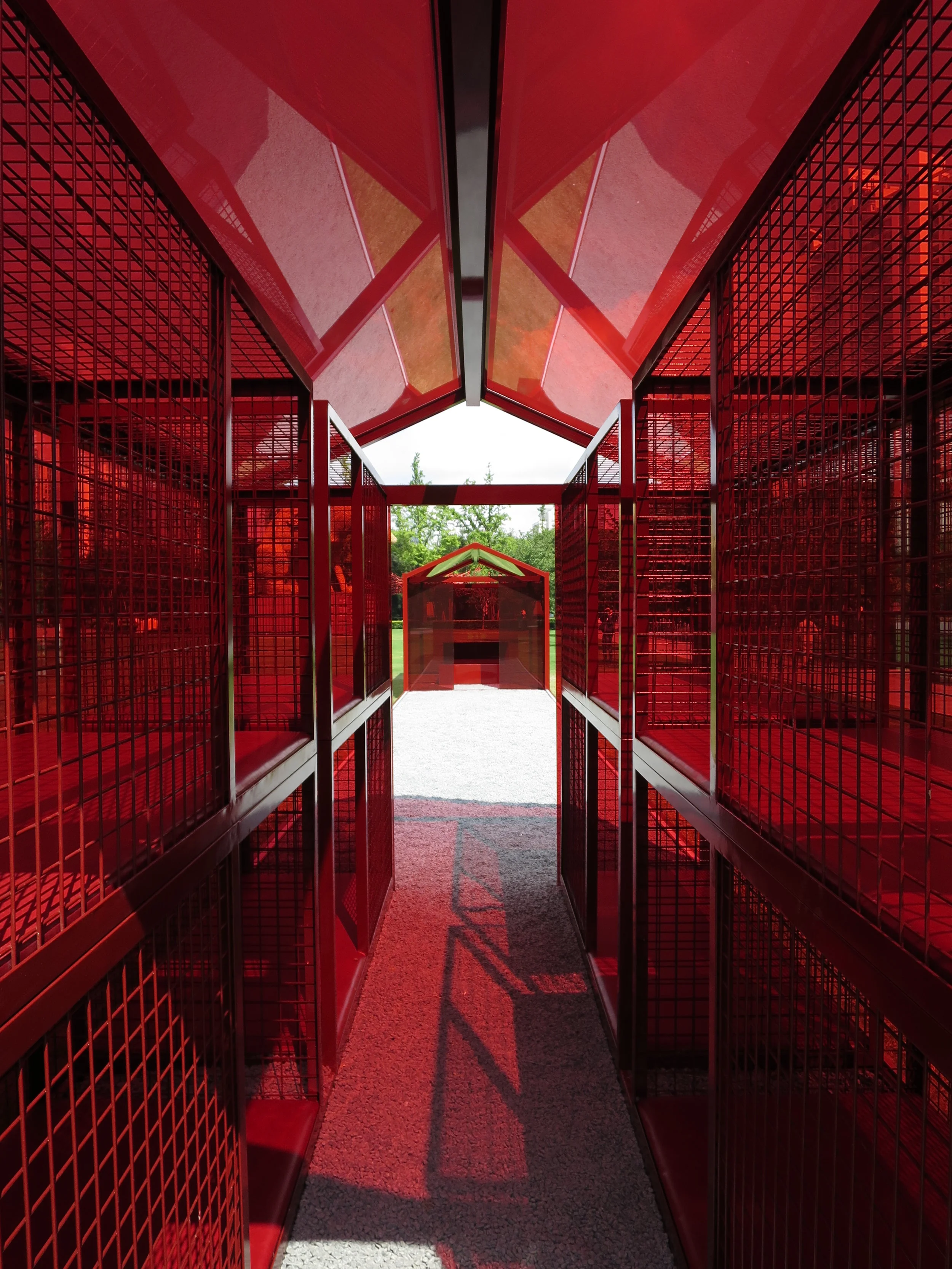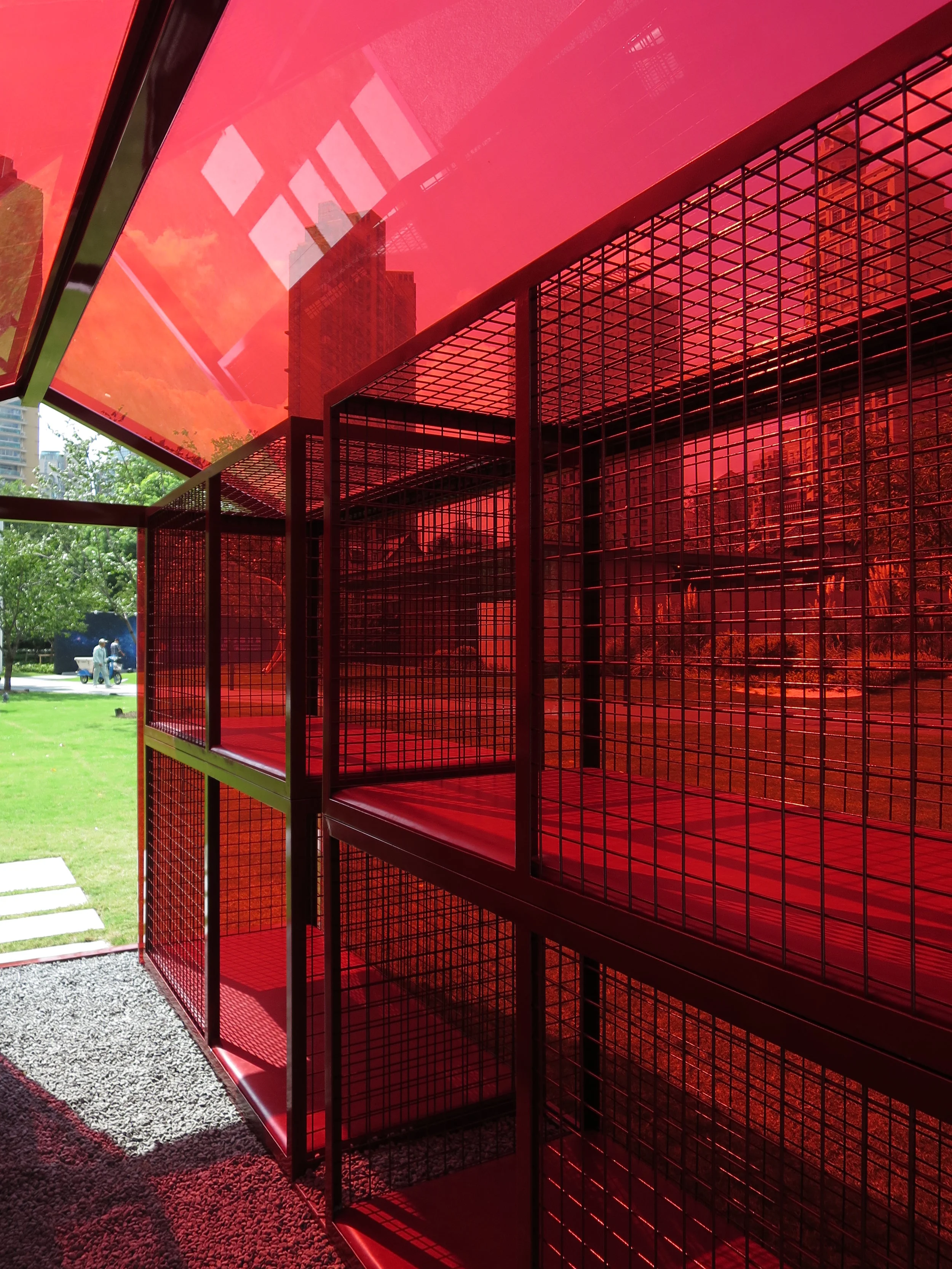“Living beyond the Door step, how small can a home be?”
Gary Chang‘s work, “Living beyond the Door step, how small can a home be?”, redefines “Compact Home”. The art piece manipulates the limited space flexibly, which allows visitors to experience the notion of compact living. Each of the two red-glass houses demonstrates different quality of living, and breaks away the conventional perception of living space, exploiting the imagination of metropolitan.
Project: “The Installation of Two Houses”
“Cageman– the minimum living space”
General Description:
“Cageman” may be the world smallest living unit. 8 cages (Dimension of a cage: 1800mm/L x 760mm/W x 900mm/H) are placed in a 10m2 house of red transparent glass to demonstrate the minimum living footprint that a house can contain in a modern city.
Making use of red glasses, with the characteristics of transparency, openness and divisibility, we can restrict the footprints of the audience, while open up their visions, so as to let the audience strongly feel the relationship between the limited space of each “cage” and the public space of the park. The house reconstruct the living quality of poor “cagemen” in a contemporary city because of extreme relationship of supply and demand in the market, as well as to raise the public awareness of this serious issue. It encourages the public to be more conscious about the importance of clever manipulation of limited space when it comes to urban planning and apartment design.
“Experimental Home – The Plastic Living Space”
General Description:
An abstract piece of multi-functional installation is arranged in the center of the red-glass house. In terms of content and function, the integration of the two objects creates flexibility and variability for the entire space. Audience, both inside or outside the house, can also experience the experiment.
The house provide a dialectical imaginary space through an abstract and inspiring art installation, which allows the audience to feel the relationship between “the furniture” and the space purely, therefore provoking audience to reconsider the different possibilities of an urban residential living in a limited space. Furthermore the art piece encourages the locals to actively participate in the city’s surroundings as well as utilize the public resources wisely, to reconsider the role of compact apartments in the city.

